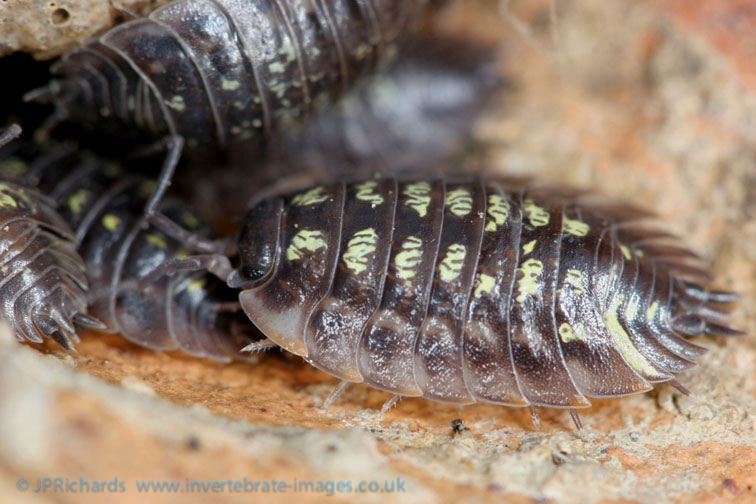Oniscus asellus ssp. occidentalis Bilton, 1994
Common name
Status:
- GB IUCN status: Near Threatened
- GB rarity status: Nationally Scarce
ID Difficulty
Identification
A morphologically distinct form of Oniscus occurs in south-west England, which is smaller, more brightly coloured and with a more highly arched body. Molecular studies have shown this to be a genetically distinct taxa of ancient divergence (Bilton, et al, 1999).
Since the two forms can interbreed, to produce morphologically intermediate hybrids, this south-western taxon was described as a sub-species O. asellus ssp. occidentalis (Bilton, 1994) rather than a full species. It is only reliably identified from a male specimen, where the tip to the 1st endopod is forked (simple in O. a. asellus).
Distribution
Scattered populations of O. a. occidentalis occur in south-western England, south Wales and the south coast of Ireland. Beyond this intermediate forms of hybrid origin occur sporadically throughout England (and probably Ireland).
The evidence suggests that this ancient sub-species is probably the original form native to Britain and Ireland, but it is being hybridised into extinction by the more competitive 'continental' sub-species O. a. asellus (Bilton, et al, 1999).
Habitat
O. a. occidentalis favours rural semi-natural damp woodland, wetland and rank grassland (whereas O. a. asellus readily colonises drier habitats and synanthropic sites).
This summary is based on the detailed account in Gregory (2009).
References
Gregory, S. (2009) Woodlice and Waterlice (Isopoda: Oniscidea & Asellota) in Britain and Ireland. Field Studies Council/Centre for Ecology & Hydrology.
Bilton, D.T., Goode, D. & Mallet, J. (1999). Genetic differentiation and natural hybridization between two morphological forms of the common woodlouse, Oniscus asellus Linnaeus, 1758. Heredity, 82: 462-469.
Bilton, D.T. (1994). Intraspecific variation in the terrestrial isopod Oniscus asellus L. Zoological Journal of the Linnean Society, 110: 325-354.



